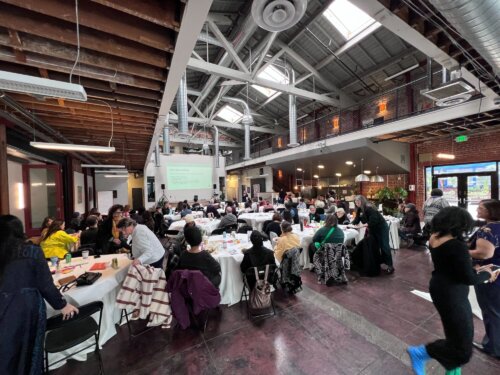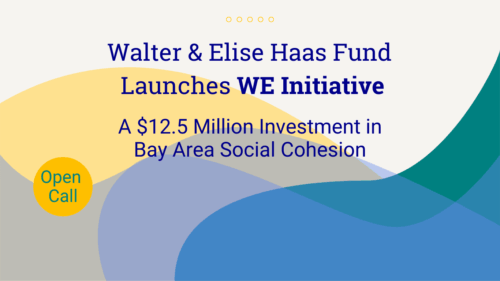Oakstop pt. 2: Building Legacy and Creative Ecosystems
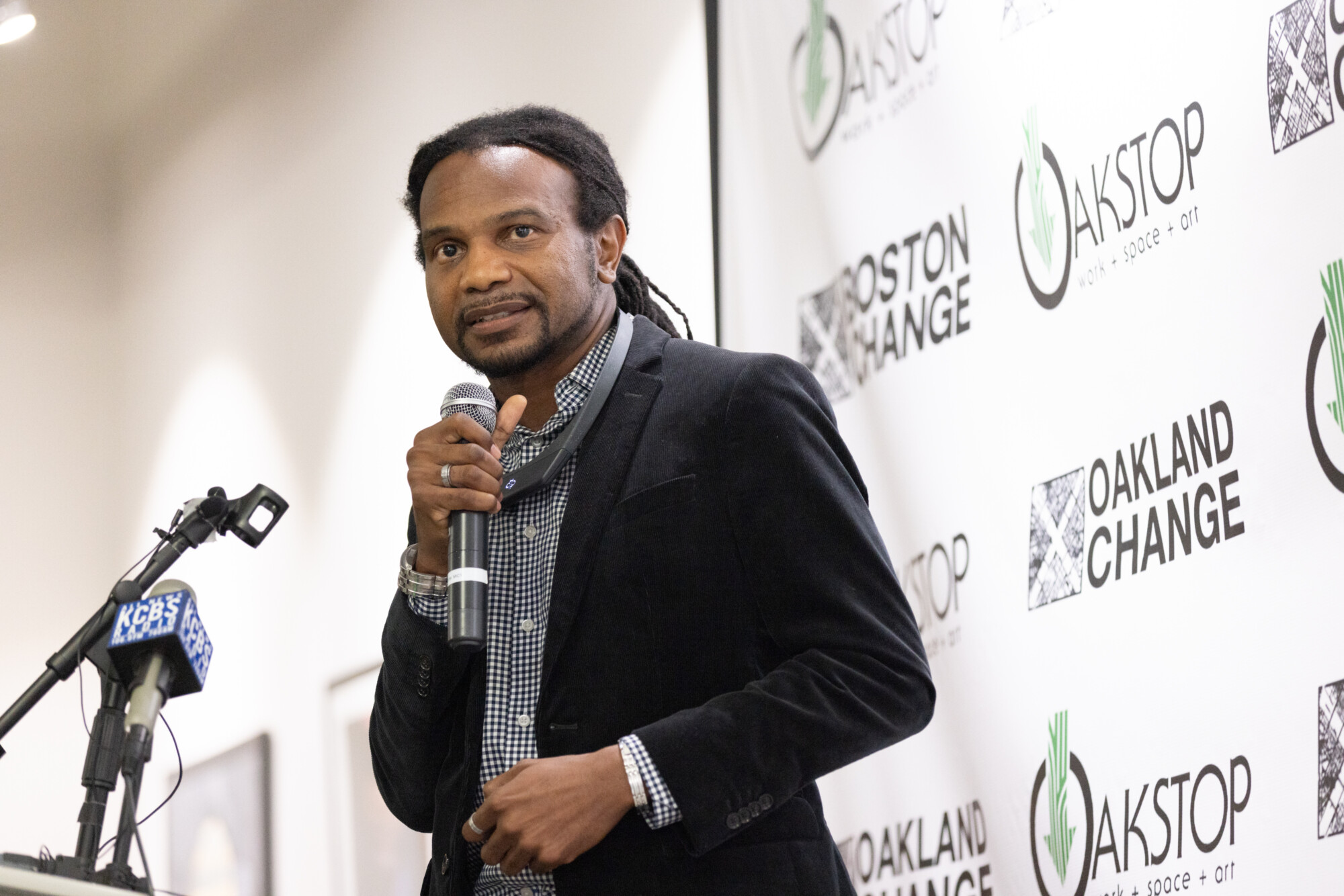
Trevor Parham at Oakstop press conference August 2024, photo by Amir Aziz
Developed in partnership between CAST & PJS Consultants
Interviews & content drafted by artist/writer dana e. fitchett with editing by CAST
This is part 4 of a 6-part blog series where we’ve spent time hearing from our partners in Oakland: Black Cultural Zone, Oakstop, and Betti Ono Foundation. Read why we’re highlighting these three Black Oakland natives and their remarkable work here.
Last week, we shared an introduction to the work of Oakstop and their Founder and CEO, Trevor Parham. This week, we’re sharing more about Trevor’s work and how he and Oakstop have partnered with CAST.
The Overlooked Value-Add of Artists
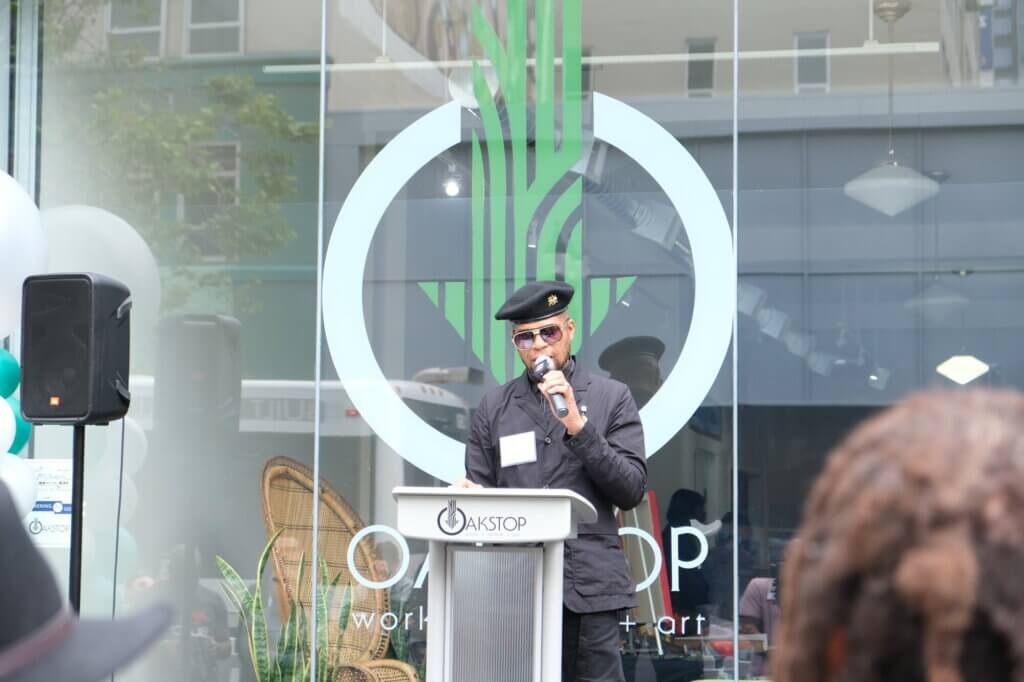
“In the same way that people often overlook the ways that Black people have built and invented most of our modern society,” Trevor reflects, “we also overlook the way artists have built and invented most of our modern society.” He’s committed to helping people see that artists contribute to so much more than the aesthetic of a place; artists design, build, and sustain so many of our cultural institutions. He emphasizes, “Artists make so many companies what they are.” Trevor then quotes his friend and colleague, Abba Yahudah, who reminds Trevor that, “if anybody studies a civilization, they study their art.” And that’s not because art is just a nice-to-have; art is a vital building block for a healthy civil ecosystem.
“In communities of color and particularly in Black communities, arts are a tool for liberation,” Trevor elevates. “The arts are viewed in one way in Eurocentric communities and ideologies. In these spaces, art is typically something preserved for privileged folks to carry out expressive work. The conversational grounding is art as a container for self-expression.”
He points out the more expansive function that artistic engagement tends to serve in Black communities: arts as an organizing tool and as a contributor to the economics of a place. “We’re not focused on hosting ballet performances every Friday night. A large majority of the people we started Oakstop with are Black artists who use their art to feed their families, and who need their day-to-day work to be infused with their art.”
Trevor cites the Oakstop’s team’s grounding in the Black Arts Movement as a driving force behind the way they carry out their work.
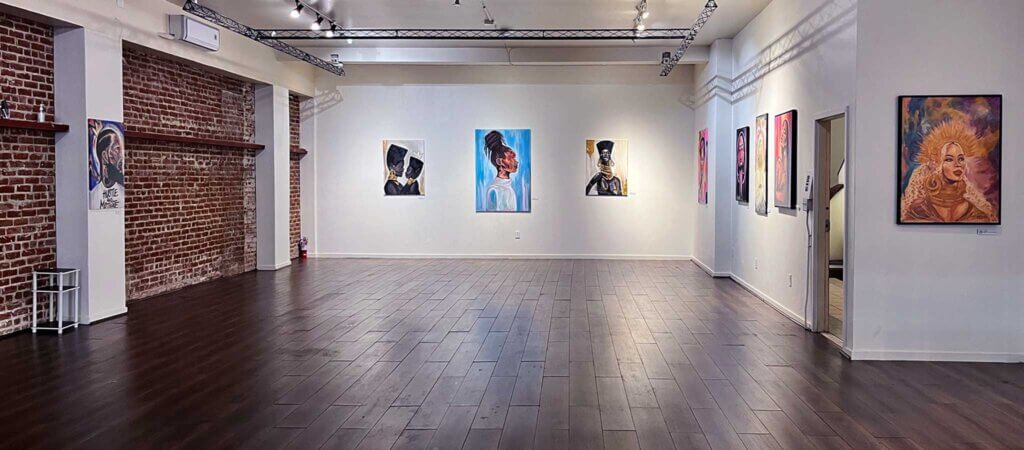
“We consider ourselves to be students of the Black Arts Movement,” he says proudly, pointing to his relationships with artist and activist Samella Lewis, known as the Godmother of African American Art, who passed at the age of 99 in 2022, and her grandson, Bay Area artist Unity Lewis.
Trevor’s direct connection to the roots of the Black Arts Movement built into him a commitment to never engage in art simply for the sake of art, but always as an organizing tool for change.
Working With CAST: A Powerful Self-Reflective Dynamic
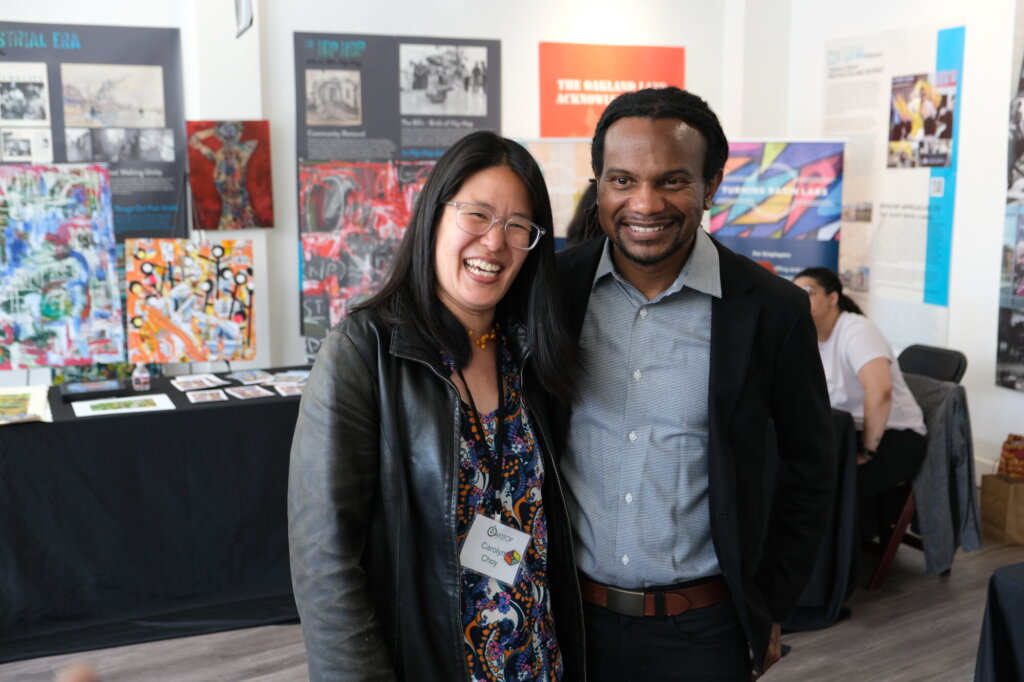
In addition to his proximity to the Black Arts Movement, Trevor was brought up by folks steeped in the work and the values of the Black Panther movement. The formative relationships from these communities organically led him down the path toward partnering with CAST. Through their existing overlapping community connections, CAST started using Oakstop space for programming that was related to Oakstop’s own programming. Trevor had personal, life-long relationships with some of the folks engaged in the CAST work, most notably Elena Serrano from Eastside Arts Alliance, whose house Trevor spent lots of time in as a young person and friend of one of Elena’s daughters. Once Elena got involved with CAST, she connected them with Trevor.
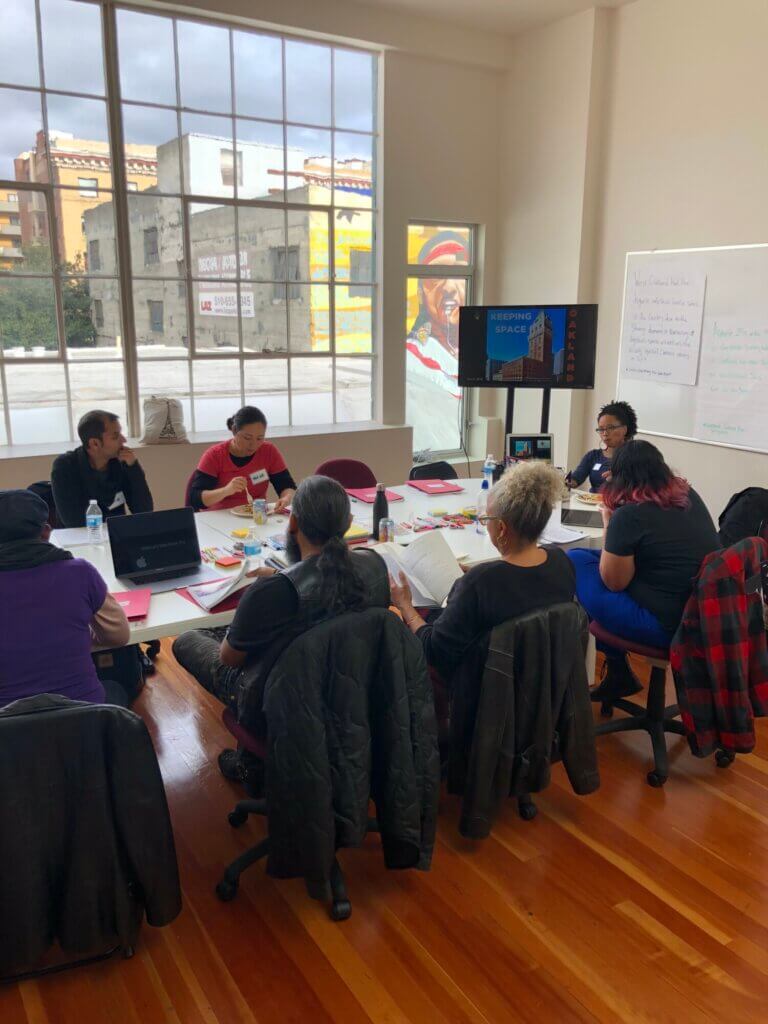
“Those relationships just come from being rooted here in Oakland,” he explains. “I like it when it’s deeper than mission alignment. Elena turned to me because I’m someone who grew up in her house, and she knows, trusts, and respects me.” After participating in some CAST programs—like Cultural Space Ambassadors—a conversation between Trevor and the owner of the building he was in revealed that the owner was open to Trevor purchasing the building. “While everything I was talking about in the CAST programming might’ve been more theoretical, this opportunity that came up felt practical.” And it was right on time.
He points to a certain self-reflective dynamic when it comes to mission alignment between Oakstop and CAST.
“While we’re thinking about the artists on a personal, individual level, CAST is focused on the work from one layer above, thinking about how to secure buildings to be containers that can care for artists in that individual and collective way.” He also speaks to the complementary nature of the two teams’ perspectives and expertise. “We’re both bringing unique value-add to the table,” he says.
At the time, CAST was focused on ownership models. With this focus, the organization brought expertise in formal finance and real estate to their goal of figuring out unconventional paths toward building ownership. “And Oakstop brings operating model expertise,” Trevor underscores. “Both of these things are required to deliver on the change we want to see.”
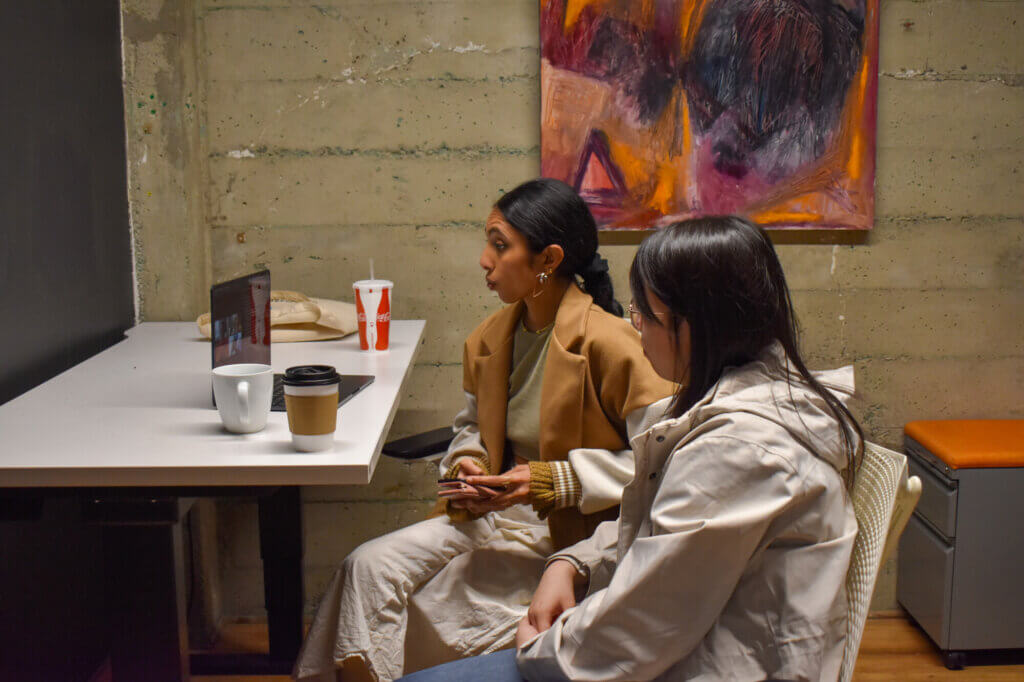
In the past, though, when Oakstop explored potential partnerships with people and organizations who had similar expertise as CAST, Trevor and his team encountered barriers. “Working with conventional finance people has been limiting,” he explains, “because they don’t understand the different types of ways we’re engaging financial innovation in the context of the arts. One of the biggest value-adds working with CAST is that they’re rooted in the arts, but have a skillset in real estate finance. That component is critical when trying to purchase real estate,” he points out, adding that his existing team didn’t possess that skill set in-house. CAST has filled a crucial gap in Oakstop’s ability to sustain their work.
“CAST even has an office in one of our newer buildings,” Trevor points out. “And now they support our work by bringing in people who aren’t just interested in the space, but also aligned to our mission and commitments to Black artists.”
He says this particular element of partnering with CAST has helped enrich the ecosystem and created a scenario where he can focus his work in his own area of energy and expertise, while receiving trusted, competent support in another, distributing the responsibility and the demands on any one person or institution’s time.
The Validation Factor
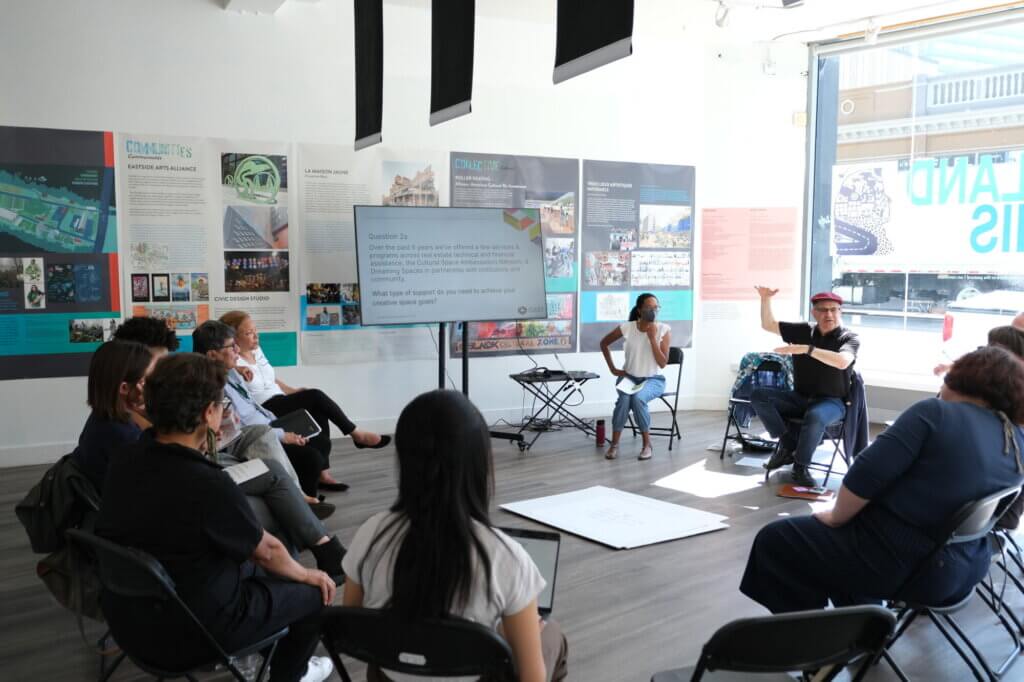
“We didn’t approach this work from the same kind of perspective that CAST has,” Trevor says. “They’ve had a bit more of an industry- or academically oriented perspective, with lots of clarity on real estate and finance, and probably a lot more data than we had.” Oakstop came to be through a much more grassroots evolution. “We just did it intuitively and instinctively and organically,” Trevor reflects. And while he clearly values the organic nature of how the work came together, he also acknowledges a certain hurdle that he and his colleagues work to jump over.
“With our less industry-oriented path comes a bit of impostor syndrome. So it’s helpful in that sense to have a group like CAST come along and say that we have all the boxes checked. CAST has made it clear that—even from a perspective that’s outside of the immediate Black arts ecosystem—the work I’ve been doing is valuable, relevant, needed, and uniquely evolved.”
He points to CAST’s broad purview of arts organizations and other organizations trying to make headway in real estate and the arts as something that, from his perspective, lends credibility and weight to their word. “When they come back to me to say, ‘You all have been able to do something that other folks haven’t been able to do,’ that means something to me.”
As CAST encounters other organizations that could benefit from Trevor’s expertise, they’re bringing him into conversations to share insights on operating models. “We’re both continuing to connect each other to various different possibly beneficial professional relationships,” he says. “This ecosystem is a lot of what feeds our work, and CAST resonates with that approach.”
Challenges in Partnering With CAST
The crucial and powerful work of partnership and collaboration across difference in pursuit of social transformation almost inevitably comes along with some level of difficulty. Trevor shares a key challenge around perspective that he’s encountered in his partnership with CAST, saying, “I experience consistent tensions around how we look at what we’re doing in real estate. We have a model based on how you monetize space in different ways, but they’re looking in a more traditional real estate sense.” This divergence of perspectives leads to misaligned visions of the future for any given building. As Trevor explains, “Our business model isn’t technically a real estate model; it’s much more about operating space than holding it and maintaining it. Sometimes the conversation on that point is the building will eventually just be leased up, whereas I’m looking at it as a way to eventually have everyone in the community here, using it in dynamic, different ways and making a lot more of it than if we did it the conventional way.”
Our Learning
We take this reflection to heart as we work to shift our thinking and practices in ways that are both authentic and responsive. For a long time, CAST’s work was solely focused on securing permanent real estate by supporting arts organizations to buy their buildings. When the COVID-19 pandemic disrupted business as usual, it opened our eyes to a different dimension of underutilized spaces; we pivoted to an understanding that we needed to be more nimble and responsive in a time of massive disruption and urgent need. The Dreaming Spaces program is an example of shifting the way we work during this time.
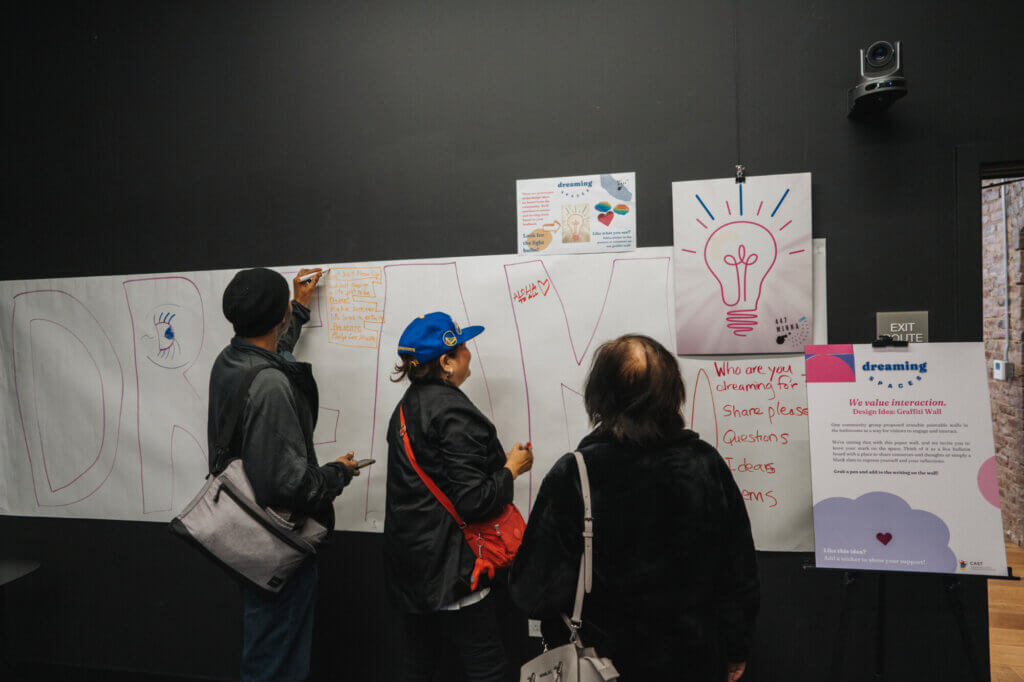
In our efforts to capitalize on commercial vacancies, we’ve since learned that we should be thinking more dynamically and expansively about available space. One example of how this rethinking can manifest is by approaching projects with the intention to utilize a building for multiple tenants rather than always prioritizing single ownership.
For many small to mid-sized nonprofits, the responsibility of managing an asset when assuming ownership can be demanding beyond their means. Having access to shared communal spaces — which creates opportunities for connection within an affordable, multi-tenanted environment — can be more fitting within the arts ecosystem. Coexisting in this way can relieve the stress of single ownership; support programmatic priorities; and provide stability. We’ve seen the potential of this type of shared space realized in CAST’s building at 447 Minna in San Francisco, where we see multiple groups carrying out their work in a setting where natural synergies develop across disciplines and differences.
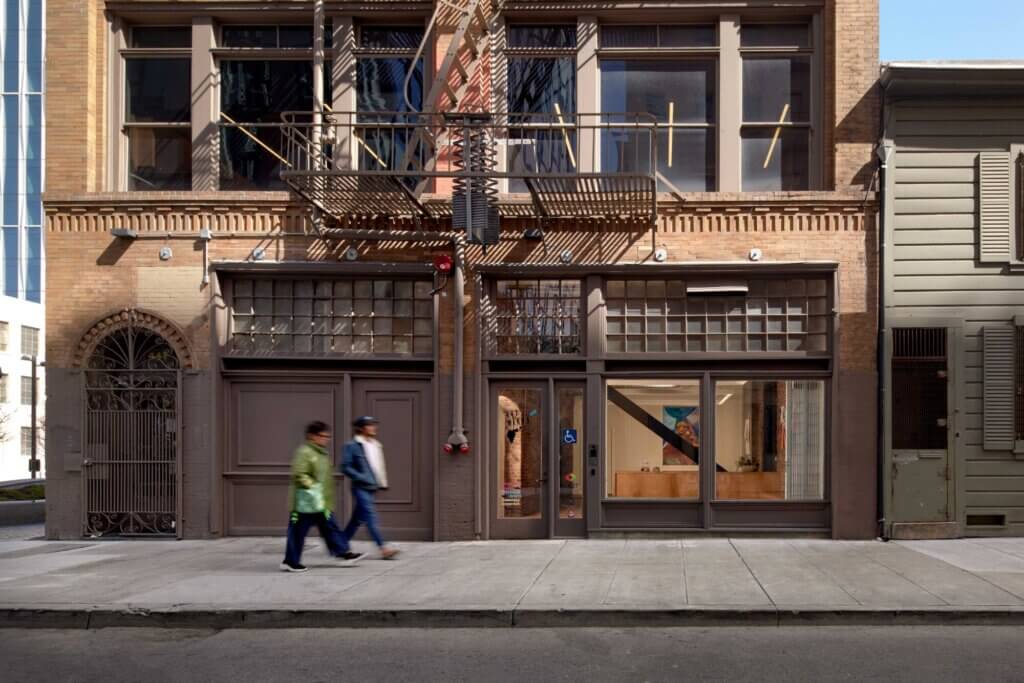
Looking Ahead: What’s Still Needed
While Trevor expresses positivity around the amount of space that Oakstop currently owns, including a recent purchase of its original 25,000 square foot building at 1721 Broadway, he also has clear visions for filling existing gaps. “Concretely,” he says, “we need more space for individual offices. And more specifically, we need more space for individual artist studios.” And as is the Oakstop way, Trevor thinks about these spaces in terms of the experience of the artists he serves. “Over the years, we’ve seen offices and artist studios as the same thing,” he points out, “but we’ve heard from both sides that there are important distinctions. We want artists to have access to spaces that feel right, alongside aligned tenants and neighbors, priced for artist budgets.” This means aiming for affordable units with prices that remain under $500 monthly.
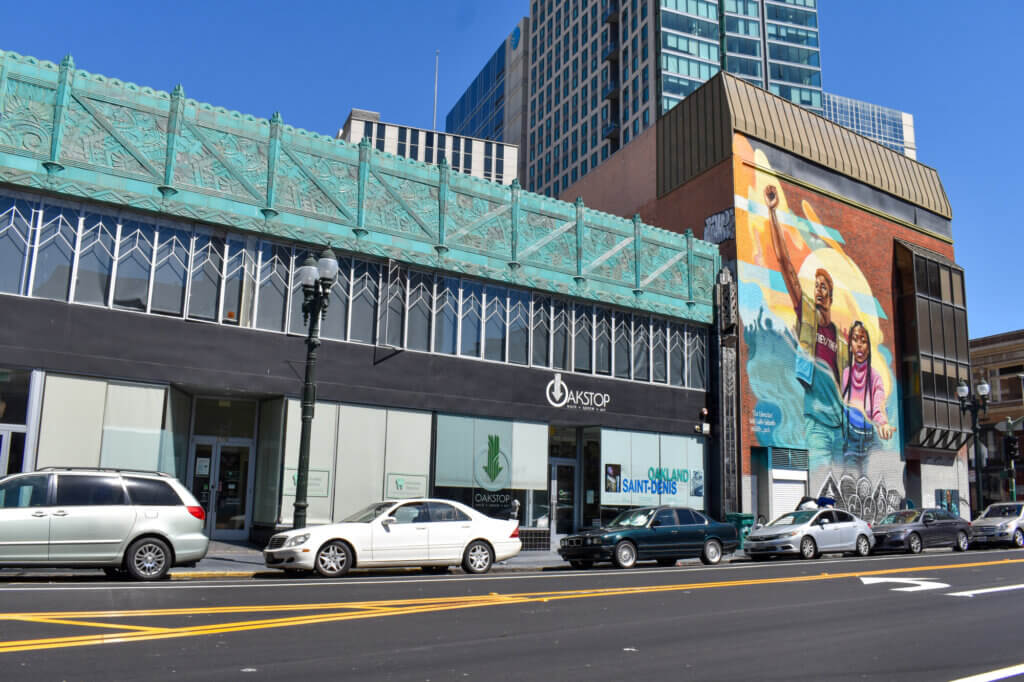
In the less concrete space, Trevor elevates a need for more honest, transparent conversations that can contribute to a shift in the systemic dynamics of real estate access for Black creative entrepreneurs.
“We need more space to talk with funders around why this work is important,” he says, “and particularly the importance of funding work that straddles for profit and nonprofit, and also of funding work that isn’t real estate investment or venture capital or a traditional grant.”
He expresses urgency around getting folks to engage in these kinds of conversations in service of thinking more innovatively about financing work like Oakstop’s. “That’s a lot of what I’m working on now at a high level,” he shares. “Talking to all these audiences to say, ‘You all have the resources,’ and emphasize that there’s a way to figure out how to leverage them in aligned ways. It just takes time and space.”
And, of course, Trevor points to the need for more capital resources. “We need a macro strategy for infusing large amounts of capital into arts—something that’s more innovative than a 0% loan.” The type of capital he has in mind is startup capital for an entire ecosystem. “That capital should come from the same orgs who are putting money into civic infrastructure; they should be doing that with the arts ecosystem. Where that should be going is sustainability—not a one-time grant to have several different music performances. But to instead bring in the resources to design a sustainable model for that.”
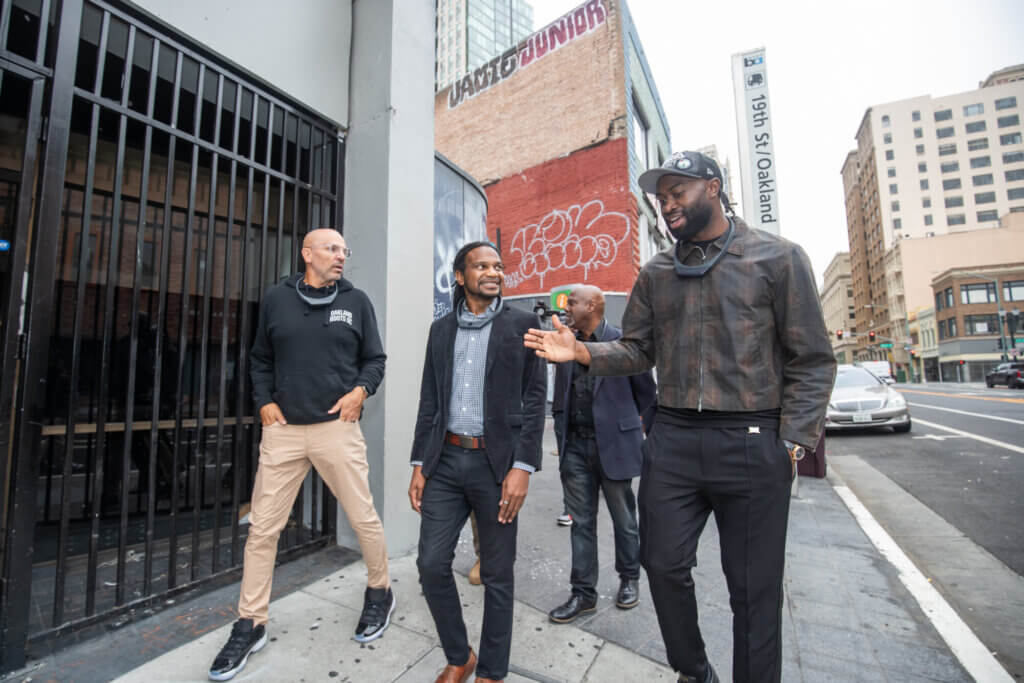
Oakstop has just recently announced a partnership with the XChange, a pioneering national initiative, led by Jaylen Brown and Jason Kidd, focused on a place-based strategy to bridge the racial wealth gap. As the lead organization for the Oakland XChange (the Oakland component of the larger national strategy), Oakstop has the opportunity to participate in the type of macro strategy that Trevor envisions—a strategy that leverages capital from influential high net worth individuals (Black professional athletes) with the resources and deep personal commitment to bridging the wealth gap. The XChange acknowledges that connection between artists, small businesses, and real estate, providing Oakstop with the ideal platform for accelerating its mission. The Oakland XChange plans to acquire even more real estate in downtown Oakland, organize other local organizations in the implementation of the strategy, and restore vibrancy to the neighborhood by incubating artists and entrepreneurs.
We look forward to continuing to work alongside Trevor and other like-minded partners to support not just individual projects but the holistic sustainability of the Black arts and culture ecosystem in Oakland.
Read the series
This six-part blog series was developed in partnership between CAST and PJS Consultants, with interviews and content drafted by artist/writer dana e. fitchett, and editing by CAST.
- Community Engagement
Recognize the Present to Repair the Future
An introduction to three Oakland partnership stories.
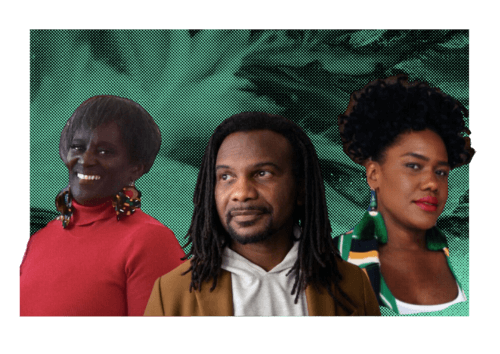
- Community Engagement
Black Cultural Zone pt. 1: A Demonstration of the Power of Hope
The story of Black Cultural Zone and Liberation Park.
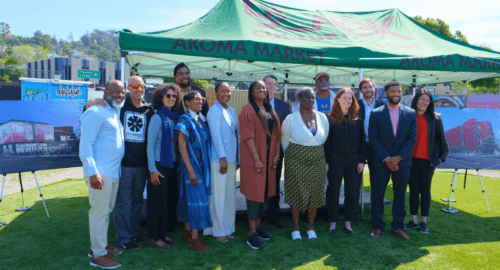
- Community Engagement
Black Cultural Zone pt. 2: Reparations as Requisite for Reimagining
Working with BCZ and learning to take more risks.
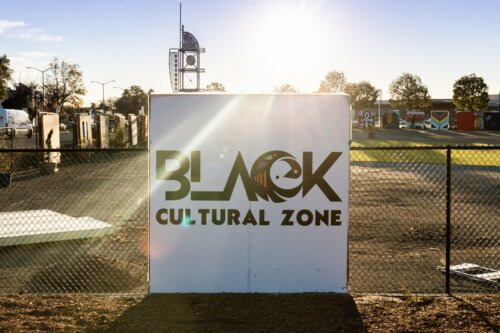
- Community Engagement
Oakstop pt. 1: Stabilizing Space and Place
The story of Oakstop and how they’re shifting the narrative for community work.
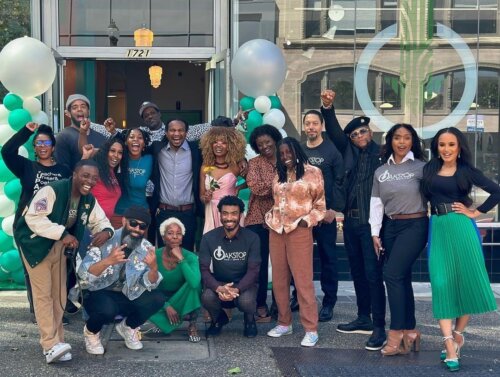
- Community Engagement
Betti Ono pt. 1: Building Cultural Permanence Through Art, Community, and Bold Leadership
Learn about how Betti Ono is redefining cultural belonging and empowering artists in Oakland.
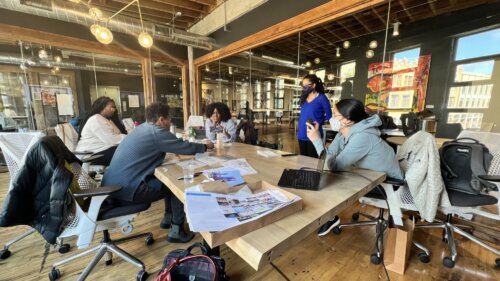
- Community Engagement
Betti Ono pt. 2: Amplifying Black Voices in Oakland’s Cultural Ecosystem
Betti Ono Foundation’s partnership with CAST and the ongoing fight for equitable access to resources for Black cultural workers in Oakland.
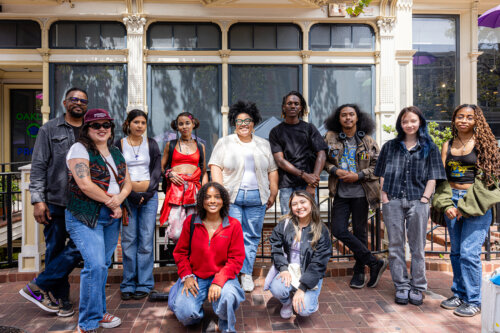

About dana e. fitchett
dana e. fitchett is a trans-disciplinary artist whose practices are grounded in listening and cultivating new languages in service of alignment, integrity, and freedom. Within and outside of PJS Consultants, dana writes and edits for individuals and community organizations working for transformation and justice by way of truth and reconciliation. As Founder and Creative Director of dance collective, Movement for Liberation; teacher of her original Groovement classes; and in her visual art and transcription processes, dana works in and in conversation with the expressive legacy of the African diaspora. Also a novice music producer and practiced plant-based foodmaker, she holds a certificate in nonprofit management and leadership; a bachelor’s degree in urban studies; and a master’s of fine art in interdisciplinary art, and spends most of her time between Boston, Brooklyn, and Oakland.



